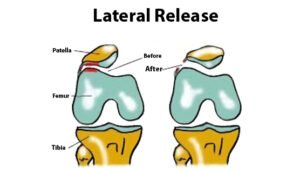Plantaris Muscle Pain_ Strains and Tears at the Back of the Leg
Understanding Plantaris Muscle Pain: Strains and Tears Behind the Leg
Injuries to the plantaris muscle, located at the back of the leg, can trigger discomfort and swelling akin to a calf strain or Achilles tendon injury. You might experience sudden pain, muscle cramps, or other symptoms. These injuries often stem from activities involving forward lunging, such as running or jumping. Positioned near the calf muscles and Achilles tendon, the plantaris muscle is prone to strains or tears. Fortunately, recovery from plantaris injuries is typically straightforward compared to more severe conditions. This guide delves into the anatomy of the leg’s posterior, symptoms, diagnosis, and treatment options for plantaris muscle injuries.
Anatomy of the Posterior Leg
The posterior leg comprises key muscles like the gastrocnemius and soleus, which dominate the calf region. The gastrocnemius, closer to the skin, features two heads—medial and lateral—while the deeper soleus lies beneath. Together, these muscles form the Achilles tendon, a robust structure that connects to the heel bone (calcaneus). When the calf muscles contract, they enable the foot to point downward, a critical motion for walking, running, and sprinting.
The plantaris muscle, smaller in size, resides centrally in the calf, nestled between the gastrocnemius heads. Its tendon runs alongside the muscle, contributing to leg movement. Interestingly, approximately 7–20% of individuals lack a plantaris muscle, and some may have variations like double- or triple-headed plantaris muscles. These differences typically don’t impact mobility in the short or long term.
Symptoms of Plantaris Muscle Injuries
Plantaris injuries, particularly ruptures, are common during high-intensity activities like running or jumping. Often dubbed “tennis leg,” these injuries frequently affect athletes lunging forward, such as tennis players. Key symptoms of a plantaris muscle rupture include:
-
Sudden, sharp pain in the calf
-
Swelling or bunching of the calf muscle
-
Bruising or inflammation at the back of the leg
-
Cramping or spasms in the calf
In contrast, a plantaris muscle strain presents milder symptoms, typically involving discomfort or tightness during or after physical activity.
Diagnosing Plantaris Muscle Pain
Accurate diagnosis is vital to distinguish plantaris injuries from more serious conditions, such as an Achilles tendon tear or deep vein thrombosis (DVT), a potentially life-threatening blood clot in the calf’s veins. Unlike an Achilles tear, which restricts downward foot movement, a plantaris rupture typically allows this motion. To confirm the injury, healthcare providers may use:
-
Magnetic Resonance Imaging (MRI): Provides detailed images to identify strains, tears, or other causes of calf pain.
-
Ultrasound: A non-invasive test to visualize the plantaris muscle and rule out DVT or Achilles issues.
These diagnostic tools ensure precise identification of the injury and guide appropriate treatment.
Treatment Options for Plantaris Injuries
Most plantaris muscle injuries respond well to non-surgical treatments, offering relief from pain and restoring function. The initial approach often involves the R.I.C.E. method:
-
Rest: Avoid activities that strain the calf.
-
Ice: Apply cold packs to reduce swelling.
-
Compression: Use bandages to support the muscle.
-
Elevation: Raise the leg to minimize inflammation.
For mild strains, short-term use of non-steroidal anti-inflammatory drugs (NSAIDs) may alleviate pain and swelling, though long-term use is discouraged due to potential side effects. In cases of severe pain or a tear, temporary immobilization or crutches may be necessary to allow healing. Working with a physical therapist or athletic trainer can help gradually restore mobility and strength.
Recovery typically spans several weeks, with full healing potentially taking up to 8 weeks, depending on the injury’s severity.
When to Suspect a More Serious Condition
While plantaris injuries are generally manageable, symptoms resembling those of an Achilles tendon tear or DVT require urgent attention. Persistent pain, swelling, or difficulty moving the foot warrants immediate medical evaluation to rule out these conditions.
Conclusion
The plantaris muscle, though small, plays a role alongside the calf’s larger muscles and Achilles tendon. Injuries, often triggered by lunging motions in sports, can mimic more severe conditions but typically heal faster with conservative care. Understanding the symptoms, securing an accurate diagnosis, and following a tailored treatment plan ensure a smooth recovery, helping you return to activity with confidence.







